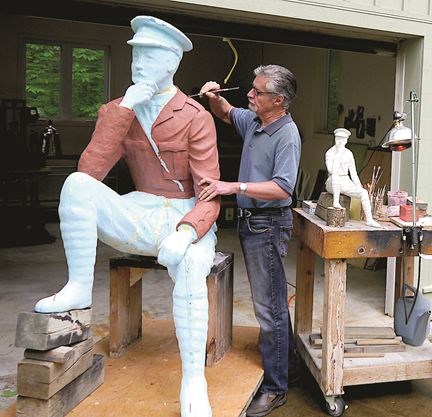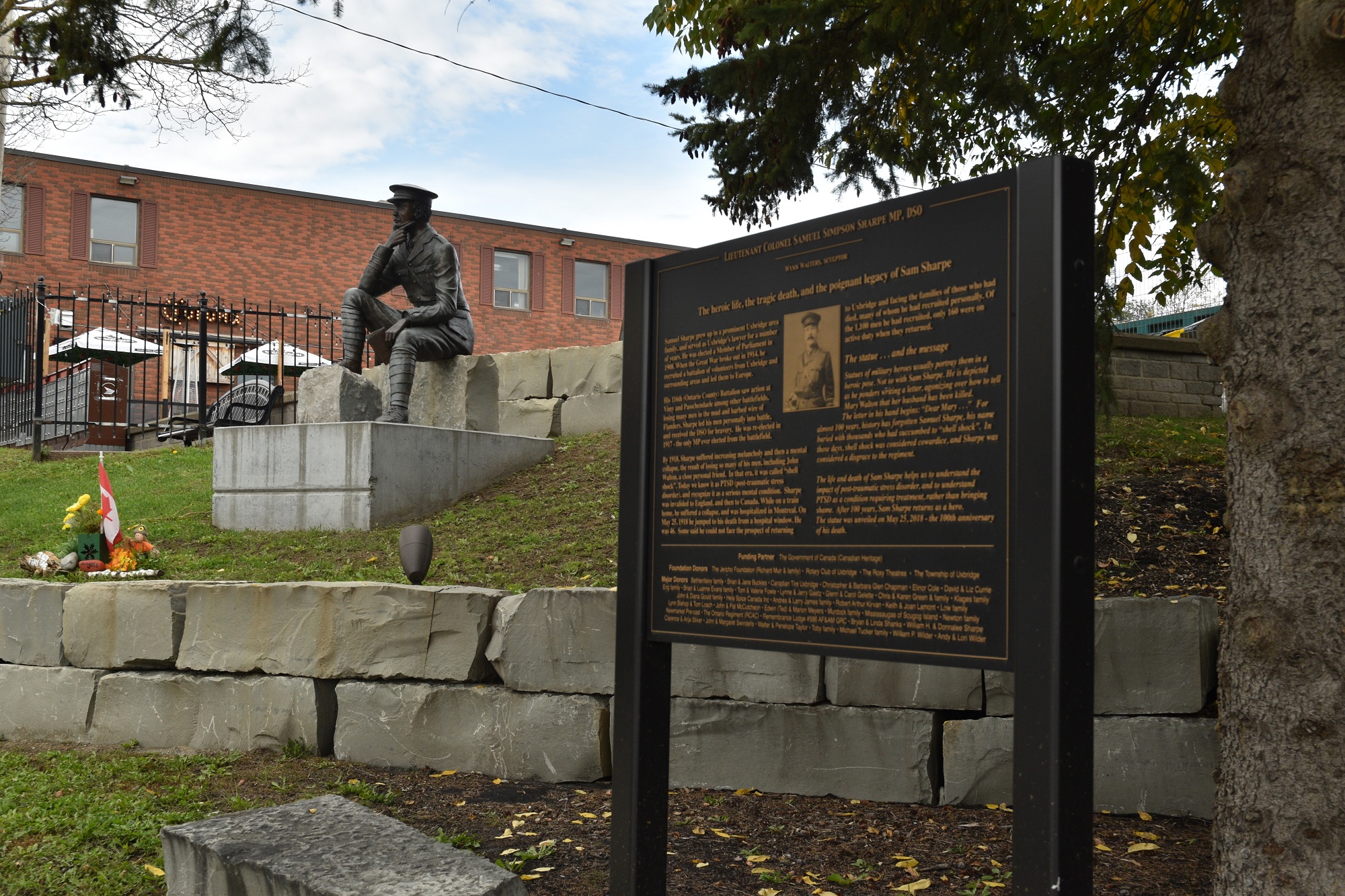Lieutenant Colonel Samuel Sharpe was honoured on May 25, 2018, the 100th anniversary of his death, with the unveiling of a life-size statue. The statue was funded partly through community donations, the Rotary Club of Uxbridge and the Uxbridge-Scott Historical Society. Created by sculptor Wynn Walters, the statue of Sharpe is depicted as he ponders writing a letter, agonizing over how to tell Mary Walton that her husband had been killed. The letter in his hand begins: "Dear Mary..."
For almost 100 years, history has forgotten Samuel Sharpe, his name buried with thousands who had succumbed to "shell shock". In those days, shell shock was considered cowardice, and Sharpe was considered a disgrace to the regiment. The life and death of Sam Sharpe helps us to understand the impact of post-traumatic stress disorder, and to understand that it is as a condition requiring treatment, rather than bringing shame.
Samuel Sharpe grew up in a prominent Uxbridge area family, and served as Uxbridge's lawyer for a number of years. He was elected a Member of Parliament in 1908. When the Great War broke out in 1914, he recruited a battalion of volunteers from Uxbridge and surrounding areas and led them to Europe. His 116th (Ontario County) Battalion saw action at Vimy and Passchendaele among other battlefields. Many men were lost in the mud and barbed wire of Flanders. Sharpe led his men personally into battle, and received the Distinguished Service Order for bravery. He was re-elected in 1917 - the only Member of Parliament ever elected from the battlefield.
By 1918, Sharpe suffered increasing melancholy and then a mental collapse, the result of losing so many of his men, including John Walton, a close personal friend. In that era, it was called "shell shock". Today we know it as post-traumatic stress disorder, and recognize it as a serious mental condition. Sharpe was invalided to England, and then to Canada. While on a train home, he suffered a collapse, and was hospitalized in Montreal. On May 25, 1918, he jumped to his death from a hospital window. He was 46. Some said he could not face the prospect of returning to Uxbridge and facing the families of those who had died, many of whom he had recruited personally. Of the 1,100 men he had recruited, only 160 were on active duty when they returned.

